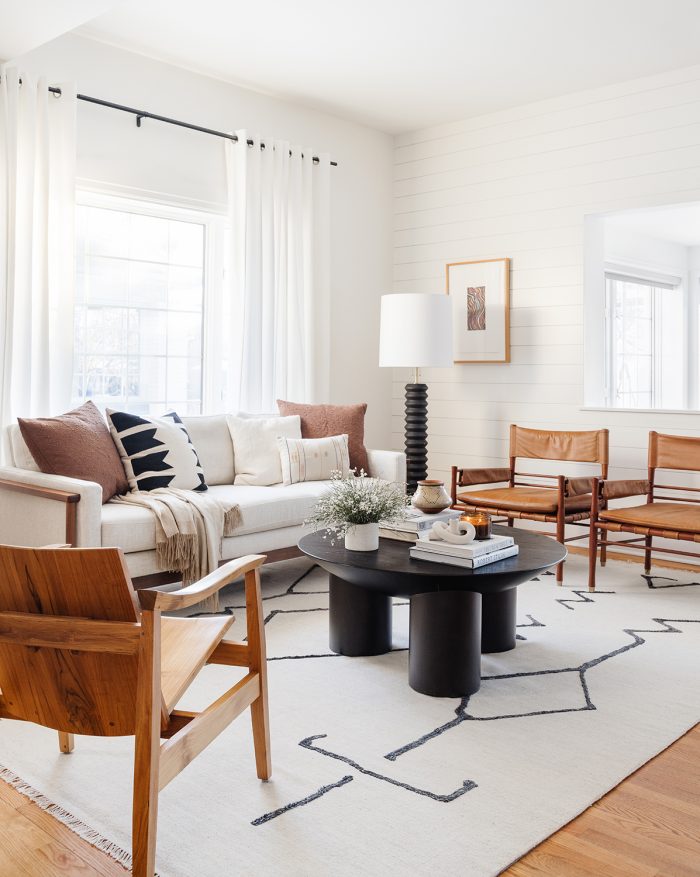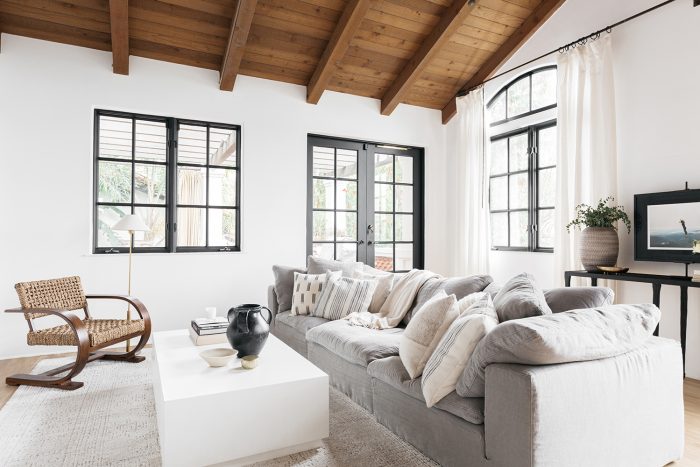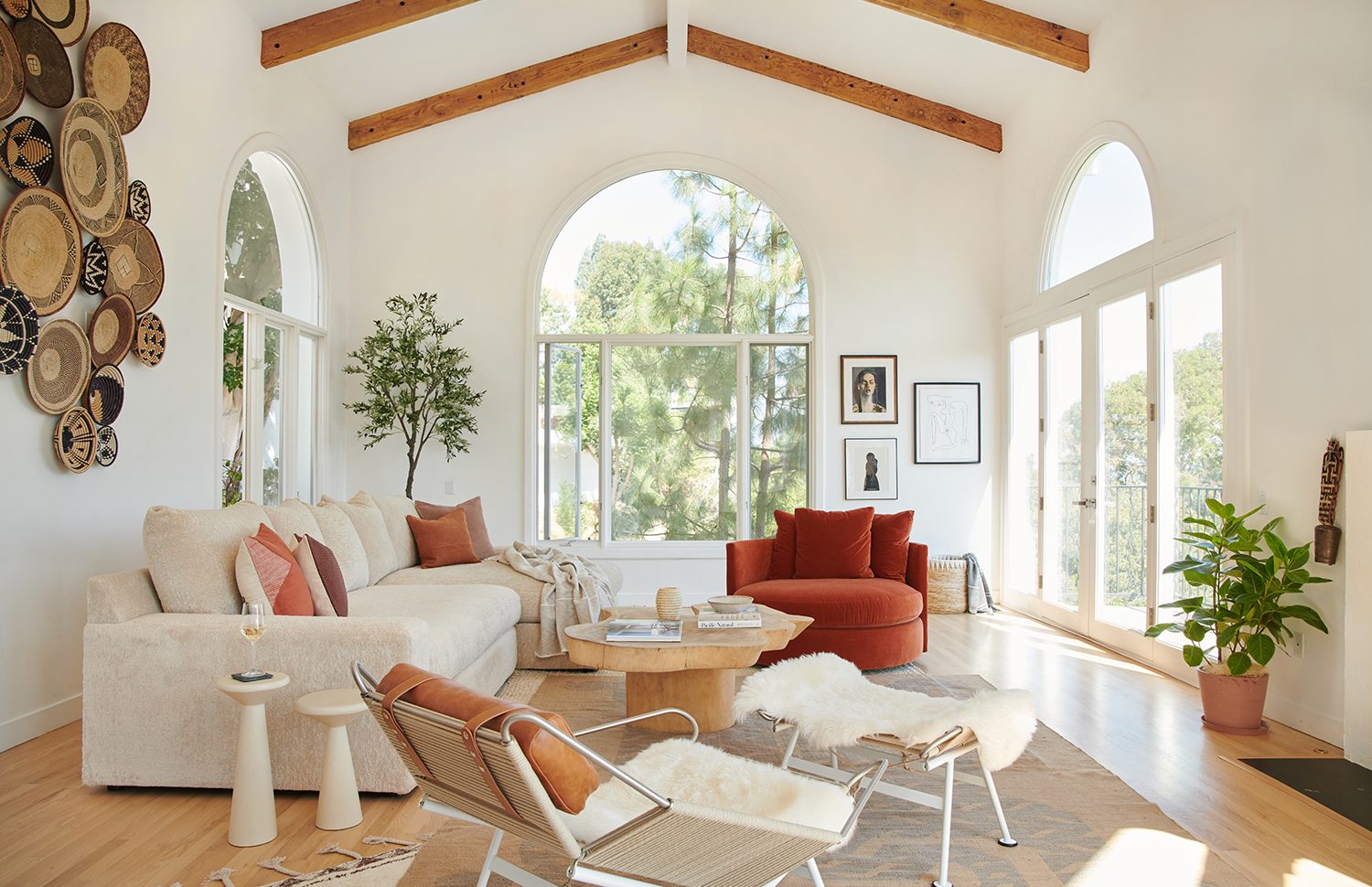As any design lover can attest, the world wide web offers an endless selection of area rugs — to the point where choosing one can be straight-up overwhelming. Our expert designers are here to share three simple steps for how to choose an area rug for any given space.
TLDR: It always starts with measuring. Once you know the size of the space you want to cover, then you can consider its usage. High traffic spots call for certain types of rugs, while low key zones allow for others. Last but certainly not least, style comes into play. We have tips for finding the most aesthetically pleasing choice for your home, too.
Keep scrolling for our step-by-step guide to choosing the right area rug for your space, per Havenly interior designers.
Step 1: Measure

The first step in most interior design endeavors should be to measure—and choosing an area rug is no exception. You have to know how much space you have overall and the size of the area you want to cover with a rug before you can even begin to think about material and style.
A common mistake we see is purchasing area rugs that are too small. A good rule of thumb is to make sure the rug is large enough that the front legs of any furniture (be it a bed or a sofa) are situated on the rug. Not all the legs need to get in on the action, but having the furniture partially on the rug will create a grounding, intentional, just-the-right-size look.
Many living rooms will benefit from rugs that are either 8×10 or 9×12, but 5×8 and 4×6 rugs often work best in more compact spaces. Bedrooms with a queen bed typically require an 8×10 rug for the entire bed and nightstands to be on top of the rug, but you can go smaller if you’re following the front-feet-only rule.
Step 2: Consider usage

Next, you must consider the usage of the space where you’re placing the rug. Is the area high traffic or low key? Will you be eating around the rug or will kids be playing on it? Does the texture need to be soft underfoot? The answers to these questions will dictate the type of material you should pick.
Low-pile rugs are easier to clean, so they’re ideal for high-traffic spaces that encounter food, children, or pets. Though low-pile rugs aren’t typically as soft underfoot, their low-maintenance benefits outweigh their coarser texture in a family room or dining zone. Opt for a performance material if you expect extra mess.
High-pile rugs are softer, but more expensive and tougher to clean. That means it’s wise to reserve them for adults-only areas like a primary bedroom, where they can add luxury and drama without getting ruined. Another perk? High-pile rugs insulate sound and dampen echo in a large, open space. Though if shedding bothers you, high-pile rugs made of natural fibers may not be the right choice.
Step 3: Select your style

Finally, once you’ve determined the size and type of material you need, you can think about the style of rug you’re seeking. If you’re designing a room from scratch, you can go with any style that speaks to you and plan the rest of the space accordingly. Many interior designers adhere to this method, picking a rug first and using it as inspiration for the furniture and decor.
But if your room is already designed, it’s important to make sure your rug blends harmoniously with the existing aesthetic. You may love the look of Turkish Oriental rugs, for example, but if your room is currently sleek and modern, this style won’t mesh. Instead, you might be better off with a simple wool or shag rug in a neutral shade.
On the other hand, you shouldn’t be afraid to take risks. Rugs are a great way to infuse a space with color or add in a fun pattern to showcase your personality. By taking stock of what you have and the design style you’re trying to cultivate, you can narrow down which bold choices will pay off—and which ones simply won’t.
From hand-picking furniture and decor to perfecting your layout, work one-on-one with a professional interior designer to make the most of your space. It all starts with our interior design quiz.

